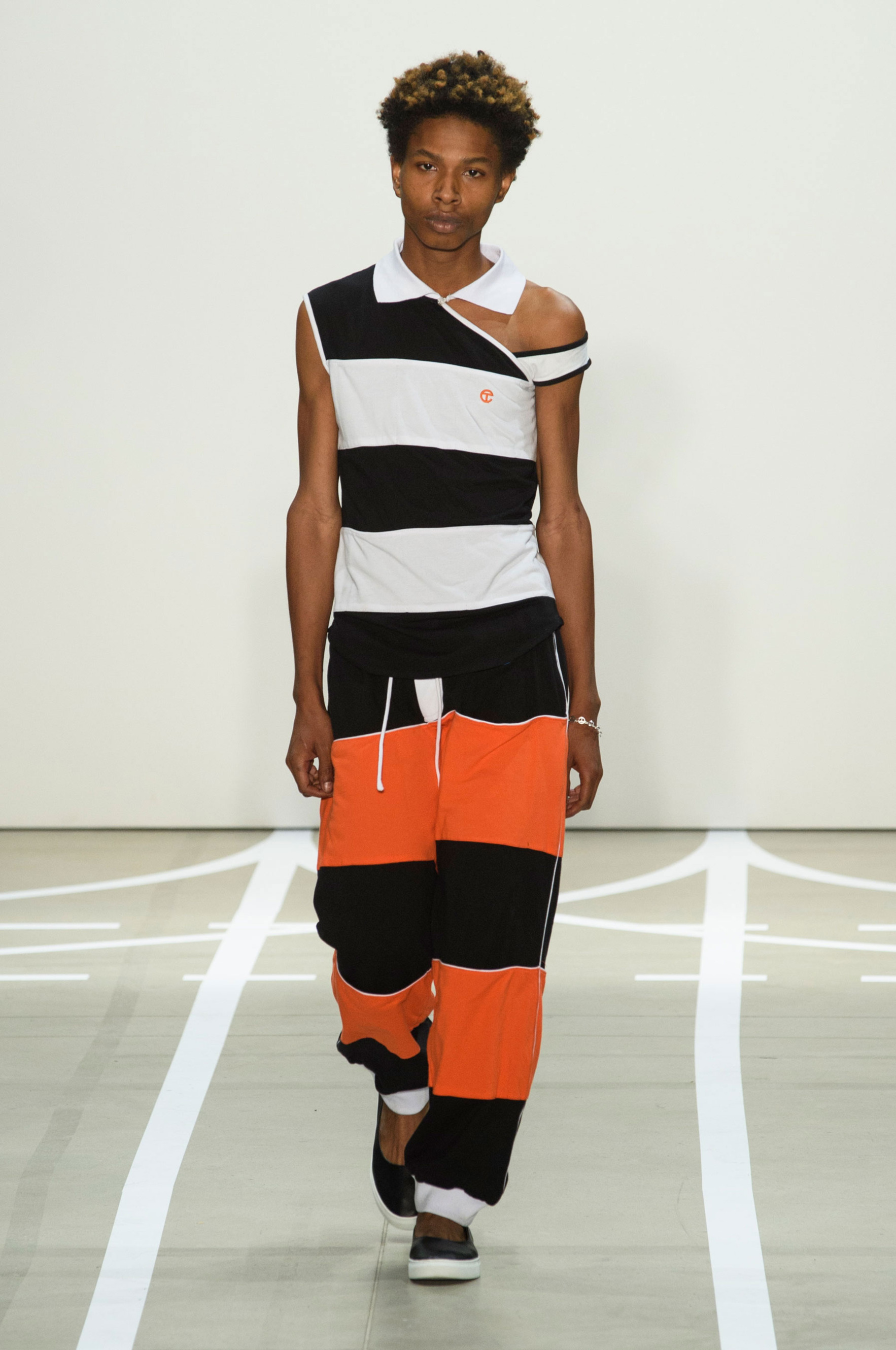Vogue Runway: Telfar Spring/Summer 2017 Review
Telfar Clemens—of the semi-eponymous label, Telfar—is onto something. It’s not that his metier has changed; he’s known for producing androgynous basics with twists. It’s just that, after tonight’s show, his particular approach feels excitingly galvanizing. Clemens has this raptor-like focus that’s grounded in the realest of realities, and that beams, forgive the verbiage, through excess and bullshit with laser precision. Or as he puts it: “This isn’t men’s, it’s not women’s, it’s not just sport, it’s not just streetwear, it’s not just casualwear. It’s clothing.” Others are doing runway versions of democratic, everyman’s garb, but there are undeniable gimmicks apparent. Somehow, this designer does them too, but gimmick-free.
For Spring, those clothes were super simple yet they tampered with convention, and came in a palette of what Clemens called “Old Navy” and “Martha Stewart” colors (mid-grade blue, tangerine, lime) derived from paint chips nicked from Home Depot. It started with a polo shirt, which Clemens either reversed to create a boat-necked front, or from which he surgically removed the back and added bra-straps. Said the designer: “The polo shirt comes from all different walks of life—the really, really low end to the high. From golf, to, you know, almost refugee. It’s universal.”
They were excellent. As were fake cardigans, with deep buttoned Vs that met at the navel and not quite the hem. “A faux pas!” Clemens exclaimed, happily. As were track pants with varsity stripes or slices at the knee. The only branding was Telfar’s own semi-industrial logo (it looks a bit like the old tennis brand Sergio Tacchini’s), which was at times allover embroidered to mimic the way, say, Ralph Lauren might render a corduroy with mallards or whales or what have you. A one-piece swimsuit/bodysuit, worn by a man, took the contextual remove to a racier but just as interesting level. What Clemens is suggesting is that the fundamentality of clothing—and its inversions, desexualization, and ultimate directness—is the future, totally stripped of pre-assigned notion. In a way, that attitude is almost anti-fashion—but it’s a breath, or even a blast, of fresh air. Telfar doesn’t sell a hype-branded hoodie or tee. It sells the belief that the elemental still has room to be shifted, and that promise feels extremely modern.
Worth noting, too: Clemens tapped the Olympians Tori Bowie (track and field) and Miles Chamley-Watson (fencing) to walk in the show. “You saw them on TV, and now they’re doing this. It’s unexpected,” he said. He even altered the way audiences generally respond—that is, via applause. His show closed with a choreographed clapping squad, which led to a loud roar from the crowd. Case in ultimate point: Clemens takes the everyday and remasters it. That’s his mission. He put it best: “We see what’s available to everyone, and make it special.”

